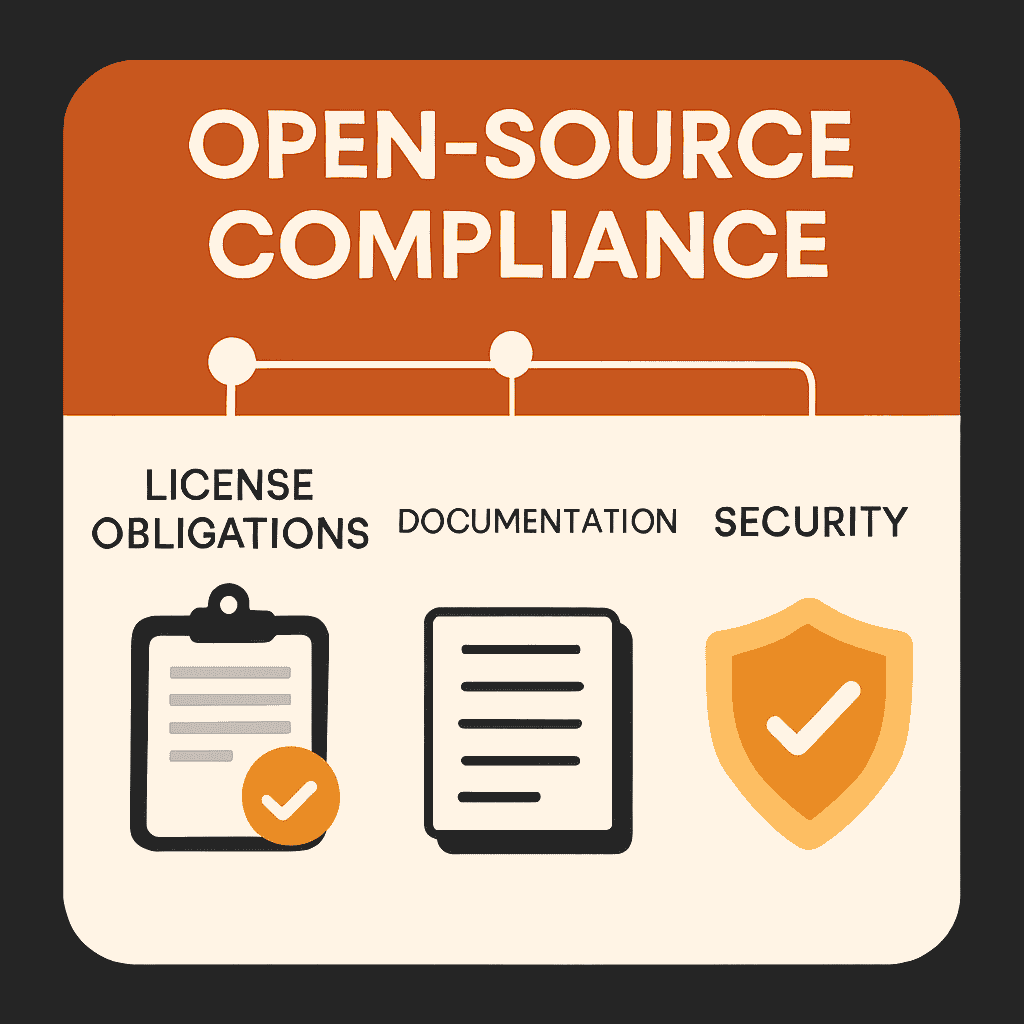In today’s fast-evolving tech ecosystem, open source compliance has become an essential aspect of software management for businesses.
As more companies integrate open-source software (OSS) into their systems, understanding the importance of open source compliance is crucial for avoiding legal pitfalls and ensuring smooth operations.
In this Open Source Compliance 101 guide, we’ll delve into the basics of compliance, key terminology you must know, and why it’s especially important for businesses in 2025.
Whether you’re a small startup or a large enterprise, mastering compliance can help you mitigate risks, stay secure, and build trust with customers and partners.
Visit our Open Source Compliance Management Service to learn more about how we can assist you.
What is Open Source Compliance?
Open source compliance refers to the practice of adhering to the legal terms and conditions set by the licenses associated with open-source software. These licenses dictate how software can be used, modified, and distributed. By ensuring compliance, businesses avoid legal risks and maintain their rights to use the software without facing penalties.
Open-source software is often released with specific licenses, such as the MIT License, GNU General Public License (GPL), or Apache License.
Each license has different requirements—some allow commercial use, while others require modifications to be shared with the community.
Businesses must track which software they use, ensure that the licensing terms are met, and stay updated on any changes in the licenses.
Why Open Source Compliance Matters in 2025
In 2025, the open-source ecosystem continues to grow, bringing increased opportunities for businesses but also heightened risks. Here’s why compliance has become more important than ever:
Compliance ensures that organizations can leverage open-source software while managing the associated risks effectively.
- Legal Protection: Open-source licenses are legally binding. Non-compliance can result in legal action, penalties, or even forced recall of products. Failing to disclose modifications or misusing open-source components can expose businesses to costly lawsuits.
- Security: Open-source software often benefits from strong community support, regular security patches, and updates. When businesses ensure compliance, they can take full advantage of these updates, improving the overall security of their systems.
- Building Trust: Customers and business partners are increasingly concerned with how companies manage open-source software. Demonstrating that your business follows open-source compliance not only helps avoid legal risks but also builds trust with external stakeholders.
- Scalability: As businesses grow, so do their dependencies on open-source software. Maintaining compliance makes it easier to scale operations and adopt new technologies without encountering legal barriers.
Key Concepts Explained
Let’s break down some important concepts related to open-source compliance, to make things easier to understand:
- Open-Source Licenses:
These are the legal documents attached to open-source software that tell you what you can and can’t do with the software. There are many types of licenses, like the MIT License and GPL, and each comes with its own set of rules.- MIT License: Lets you use, modify, and distribute the software with very few restrictions.
- GPL License: Requires that if you modify the software, you must share the changes publicly.
- SBOM (Software Bill of Materials):
Think of this as a list that tells you exactly what components are included in the software you’re using. An SBOM helps you track what libraries or open-source software your product contains, so you can check whether you’re compliant with the licenses. - SPDX:
This is a standardized format for documenting open-source licenses. By using SPDX, businesses can easily share information about the licenses used in their software projects.
Best Practices for Open Source Compliance in 2025

To make sure your business stays on top of open-source compliance, follow these steps:
- Keep Track of What You Use: Always know which open-source software your business is using. Use tools like SBOM to keep an organized list of all the open-source components in your product.
- Conduct Regular Audits: Compliance is not a one-time job. Conduct regular checks to ensure your use of open-source software is in line with the license requirements.
- Stay Updated on License Changes: Open-source licenses can change. Stay informed about the latest updates to the software and its license terms, and adjust your usage accordingly.
- Educate Your Team: Ensure that your development and legal teams understand open-source compliance and follow the best practices.
Open Source Compliance 101 Conclusion
In 2025, open-source compliance is not just about following legal rules—it’s about protecting your business, fostering trust, and supporting growth.
By understanding key concepts like open-source licenses, SBOM, and SPDX, and following best practices, you can minimize legal risks and benefit from the innovation that open-source software brings.
Take Action Today: Make compliance a priority for your business.
It will save you time, resources, and potential headaches down the road, enabling you to scale and innovate with confidence.



